Saturday, February 6, 2016
Propane industry members and likely the rest of the U.S. remember the economic crisis of 2008 and the American Recovery and Reinvestment Act stimulus program. Dedicated propane projects, which started in 2009 and 2010 under the U.S. Department of Energy’s Clean Cities program, received $33.5 million from the stimulus package, and that money funded more than 3500 propane vehicles in 28 states and more than 250 refueling stations in 18 states. Those programs are just now wrapping up — fueling stations are built and the propane vehicles have been manufactured and delivered. 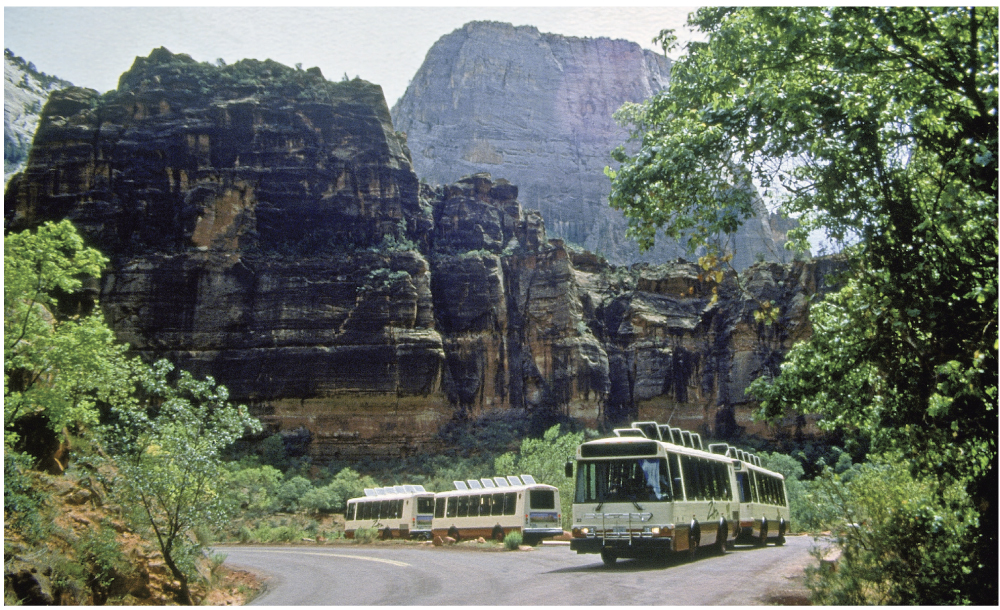
“Now the vehicles are just starting their lives of serving the fleets and driving,” national Clean Cities director Dennis Smith told BPN. “We’re doing data collection for several years to see how many miles they drive, how much fuel they use, and what their experiences are like, so we can document what we’ve achieved. It’s completely kicked off now.” A Clean Cities case study of four Texas school districts and one in Virginia showed that some of the districts saved nearly 50% on a cost-per-mile basis for fuel and maintenance relative to diesel.
Propane has been part of Clean Cities since the program was established in 1993 to reduce the country’s dependence on petroleum. Assisting fleets and consumers in switching vehicles to alternatives such as propane and electricity has been a main goal from the beginning. The program has expanded its role through the years, encouraging fleets and the public to buy vehicles that get better fuel economy or to reduce idling of trucks and buses. More recently, Clean Cities has begun analyzing these same efforts to document how they are also helping to lower greenhouse gas emissions.
Education and outreach are the main methods Clean Cities uses to reach those goals, with program representatives informing the public about different vehicles, fuels, and technologies that can help in that area. The approximately 100 Clean Cities coalitions in various communities help local fuel providers and government and local fleets coordinate projects to build fueling stations or to acquire and maintain alternative fuel vehicles. The coalitions assist in connecting fleets with businesses that can provide services they need to operate them.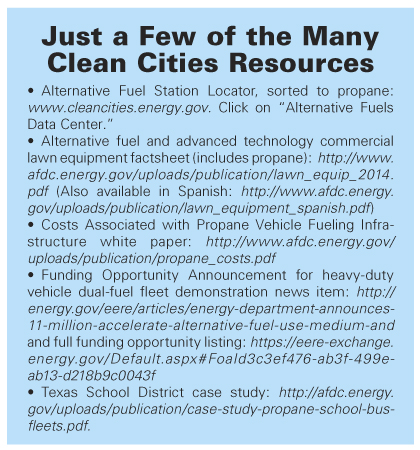
“Even though we’re based in Washington, D.C., and our program is national, this group of coalitions nationwide is really the backbone of how we get things done, because we realize [when] it’s happening locally, we can’t direct it all out of Washington,” Smith said.
Clean Cities can provide technical assistance for companies wanting to build on-site fueling stations. To do that, its representatives help the companies understand codes and standards to be followed, such as how close a fuel pump is allowed to another structure. “Or if there is an ancient rule on the books in the local community, we try to educate them and get [them] up to date so someone is not penalized for something that’s out of date.”
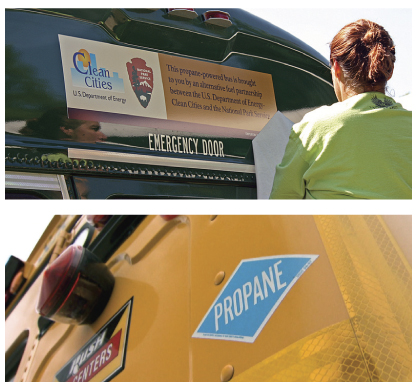
Most recently, Clean Cities has been involved with an $11-million funding opportunity, announced in September, to support development of alternative technologies for medium- and heavy-duty vehicles. One of the areas of interest is a heavy-duty vehicle dual-fuel fleet demonstration that seeks to show the performance and reliability of commercially available dual-fuel heavy-duty vehicles equipped with engines capable of operation using a mixture of diesel fuel and gaseous fuels — natural gas, propane, or natural gas-derived fuels such as dimethyl ether — and the associated emissions control systems.
That program is designed to help reduce U.S. reliance on gasoline, diesel, and oil imports, and although Clean Cities has added new areas of focus over the years, it remains committed to that goal. Reducing about 2.5 billion gallons per year of petroleum equivalent by 2020 is a main goal. But Smith noted that the organization is diversifying its portfolio of which vehicles are included and educating fleet operators and the public on smarter vehicle operation in areas such as choosing more fuel efficient vehicles and not letting a vehicle idle for long periods.
Helping communities prepare for alternative fuels is another goal. The organization is working on training programs for first responders so they know what to expect when responding to an accident involving an alternative fuel vehicle.
“If there are some outdated rules or regulations that might impact permitting or the ability to build a fueling station for these other fuels, I think we’re more involved in that than we were years ago,” Smith noted. Clean Cities provides educational resources to many different audiences, such as automotive recycling personnel on handling alternative fuel vehicles that have been in an accident. These workers might not know how to safely handle a vehicle with a tank full of propane. Smith added that enthusiasm for propane among Clean Cities participants has mirrored the rest of the country over the years. Gasoline and diesel prices were at less than $1 per gallon when the program first started, so propane was a tough sell at that time. As gasoline and diesel prices increased, alternative fuels became more attractive. In addition, vehicle technology has improved over the years, helping raise the interest level. In the early days, the technology was mainly aftermarket conversion kits that Smith noted weren’t the best-performing products at that time.
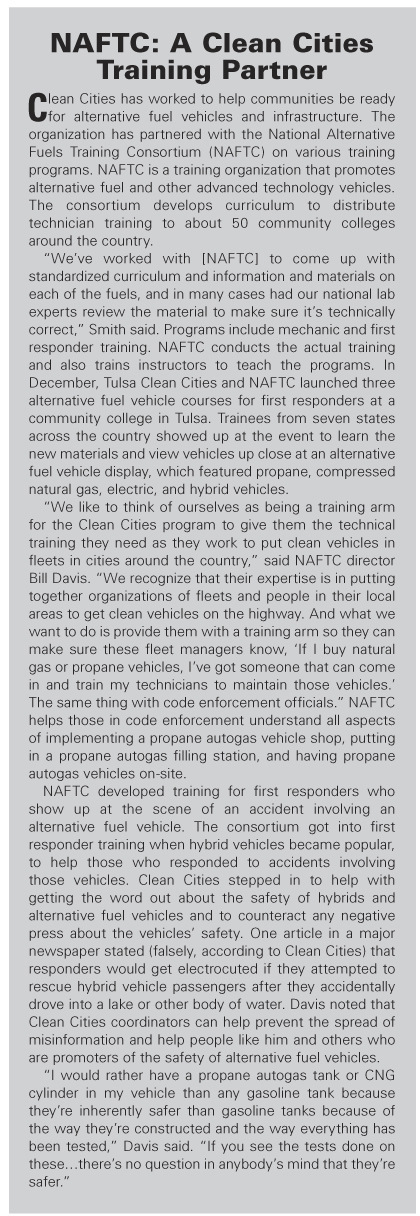
“Nowadays with propane, there’s a large number of vehicle options available from big name manufacturers, right off the assembly line or through special partnerships the manufacturers have with authorized conversion companies. So now there are Ford and Chevy pickups and so forth that you can purchase through your dealer and [are] warranted like a new vehicle so none of those worries are there, and the quality is such that they perform just as well. No more feeling like it was done with ‘shade tree’ mechanics or something that they may have heard a story about from years ago.”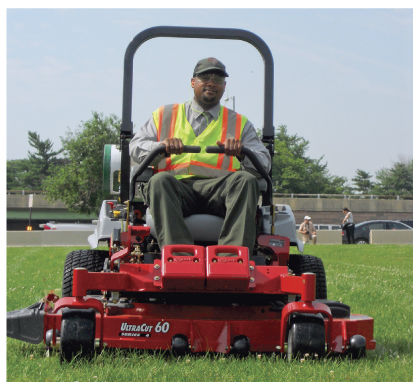
Areas of the country that see strong use among Clean Cities participants also mirrors what the overall propane industry sees. The Southeast area of the country and rural areas with less access to natural gas pipelines have seen strong propane use. Smith has seen greater propane use on farms and in national parks. More parks are looking at swapping out vehicles and mowing equipment for models that run on propane. In 2013, leaders from the National Park Service, Clean Cities, and the Propane Education & Research Council (PERC) unveiled six Exmark zero-turn-radius mowers to be used to cut the grass on the National Mall in Washington, D.C.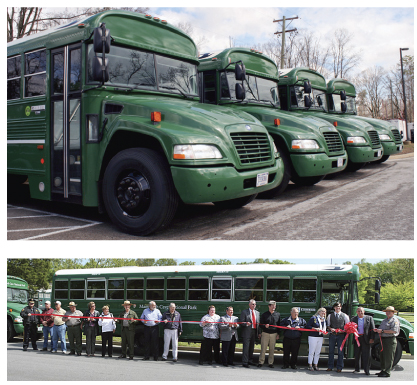
Local Clean Cities coalitions have found fleets, golf courses, and other businesses interested in using propane equipment and matched them up with propane mower manufacturers and propane marketers and assisted in finding funding incentives.
Although propane prices are currently low, alternative fuels have been challenged because of low gasoline and diesel prices, Smith noted. But fleets like UPS are seeing enough additional benefits that they are moving to propane. “We’re seeing more large fleets do the math and see what the pricing has been like long-term instead of being distracted by these price fluctuations lately with gasoline and diesel. So they know it’s a good bet long-term that they’ll be saving with the alternative fuels and that they’re making good decisions along those lines.”
He sees good things for propane in the future, and Clean Cities is investing time to improve the mapping tool on its website showing where alternative fuel filling stations are located. “We’re trying to enhance capabilities on that so people can find not only where the stations are but we’re including information such as what hours they are open, what credit cards they take, and what kind of facilities they have so if you have a big truck, you don’t accidentally go to a place that’s too small.” — Daryl Lubinsky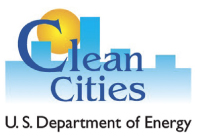

“Now the vehicles are just starting their lives of serving the fleets and driving,” national Clean Cities director Dennis Smith told BPN. “We’re doing data collection for several years to see how many miles they drive, how much fuel they use, and what their experiences are like, so we can document what we’ve achieved. It’s completely kicked off now.” A Clean Cities case study of four Texas school districts and one in Virginia showed that some of the districts saved nearly 50% on a cost-per-mile basis for fuel and maintenance relative to diesel.
Propane has been part of Clean Cities since the program was established in 1993 to reduce the country’s dependence on petroleum. Assisting fleets and consumers in switching vehicles to alternatives such as propane and electricity has been a main goal from the beginning. The program has expanded its role through the years, encouraging fleets and the public to buy vehicles that get better fuel economy or to reduce idling of trucks and buses. More recently, Clean Cities has begun analyzing these same efforts to document how they are also helping to lower greenhouse gas emissions.
Education and outreach are the main methods Clean Cities uses to reach those goals, with program representatives informing the public about different vehicles, fuels, and technologies that can help in that area. The approximately 100 Clean Cities coalitions in various communities help local fuel providers and government and local fleets coordinate projects to build fueling stations or to acquire and maintain alternative fuel vehicles. The coalitions assist in connecting fleets with businesses that can provide services they need to operate them.

“Even though we’re based in Washington, D.C., and our program is national, this group of coalitions nationwide is really the backbone of how we get things done, because we realize [when] it’s happening locally, we can’t direct it all out of Washington,” Smith said.
Clean Cities can provide technical assistance for companies wanting to build on-site fueling stations. To do that, its representatives help the companies understand codes and standards to be followed, such as how close a fuel pump is allowed to another structure. “Or if there is an ancient rule on the books in the local community, we try to educate them and get [them] up to date so someone is not penalized for something that’s out of date.”

Most recently, Clean Cities has been involved with an $11-million funding opportunity, announced in September, to support development of alternative technologies for medium- and heavy-duty vehicles. One of the areas of interest is a heavy-duty vehicle dual-fuel fleet demonstration that seeks to show the performance and reliability of commercially available dual-fuel heavy-duty vehicles equipped with engines capable of operation using a mixture of diesel fuel and gaseous fuels — natural gas, propane, or natural gas-derived fuels such as dimethyl ether — and the associated emissions control systems.
That program is designed to help reduce U.S. reliance on gasoline, diesel, and oil imports, and although Clean Cities has added new areas of focus over the years, it remains committed to that goal. Reducing about 2.5 billion gallons per year of petroleum equivalent by 2020 is a main goal. But Smith noted that the organization is diversifying its portfolio of which vehicles are included and educating fleet operators and the public on smarter vehicle operation in areas such as choosing more fuel efficient vehicles and not letting a vehicle idle for long periods.
Helping communities prepare for alternative fuels is another goal. The organization is working on training programs for first responders so they know what to expect when responding to an accident involving an alternative fuel vehicle.
“If there are some outdated rules or regulations that might impact permitting or the ability to build a fueling station for these other fuels, I think we’re more involved in that than we were years ago,” Smith noted. Clean Cities provides educational resources to many different audiences, such as automotive recycling personnel on handling alternative fuel vehicles that have been in an accident. These workers might not know how to safely handle a vehicle with a tank full of propane. Smith added that enthusiasm for propane among Clean Cities participants has mirrored the rest of the country over the years. Gasoline and diesel prices were at less than $1 per gallon when the program first started, so propane was a tough sell at that time. As gasoline and diesel prices increased, alternative fuels became more attractive. In addition, vehicle technology has improved over the years, helping raise the interest level. In the early days, the technology was mainly aftermarket conversion kits that Smith noted weren’t the best-performing products at that time.

“Nowadays with propane, there’s a large number of vehicle options available from big name manufacturers, right off the assembly line or through special partnerships the manufacturers have with authorized conversion companies. So now there are Ford and Chevy pickups and so forth that you can purchase through your dealer and [are] warranted like a new vehicle so none of those worries are there, and the quality is such that they perform just as well. No more feeling like it was done with ‘shade tree’ mechanics or something that they may have heard a story about from years ago.”

Areas of the country that see strong use among Clean Cities participants also mirrors what the overall propane industry sees. The Southeast area of the country and rural areas with less access to natural gas pipelines have seen strong propane use. Smith has seen greater propane use on farms and in national parks. More parks are looking at swapping out vehicles and mowing equipment for models that run on propane. In 2013, leaders from the National Park Service, Clean Cities, and the Propane Education & Research Council (PERC) unveiled six Exmark zero-turn-radius mowers to be used to cut the grass on the National Mall in Washington, D.C.

Local Clean Cities coalitions have found fleets, golf courses, and other businesses interested in using propane equipment and matched them up with propane mower manufacturers and propane marketers and assisted in finding funding incentives.
Although propane prices are currently low, alternative fuels have been challenged because of low gasoline and diesel prices, Smith noted. But fleets like UPS are seeing enough additional benefits that they are moving to propane. “We’re seeing more large fleets do the math and see what the pricing has been like long-term instead of being distracted by these price fluctuations lately with gasoline and diesel. So they know it’s a good bet long-term that they’ll be saving with the alternative fuels and that they’re making good decisions along those lines.”
He sees good things for propane in the future, and Clean Cities is investing time to improve the mapping tool on its website showing where alternative fuel filling stations are located. “We’re trying to enhance capabilities on that so people can find not only where the stations are but we’re including information such as what hours they are open, what credit cards they take, and what kind of facilities they have so if you have a big truck, you don’t accidentally go to a place that’s too small.” — Daryl Lubinsky




